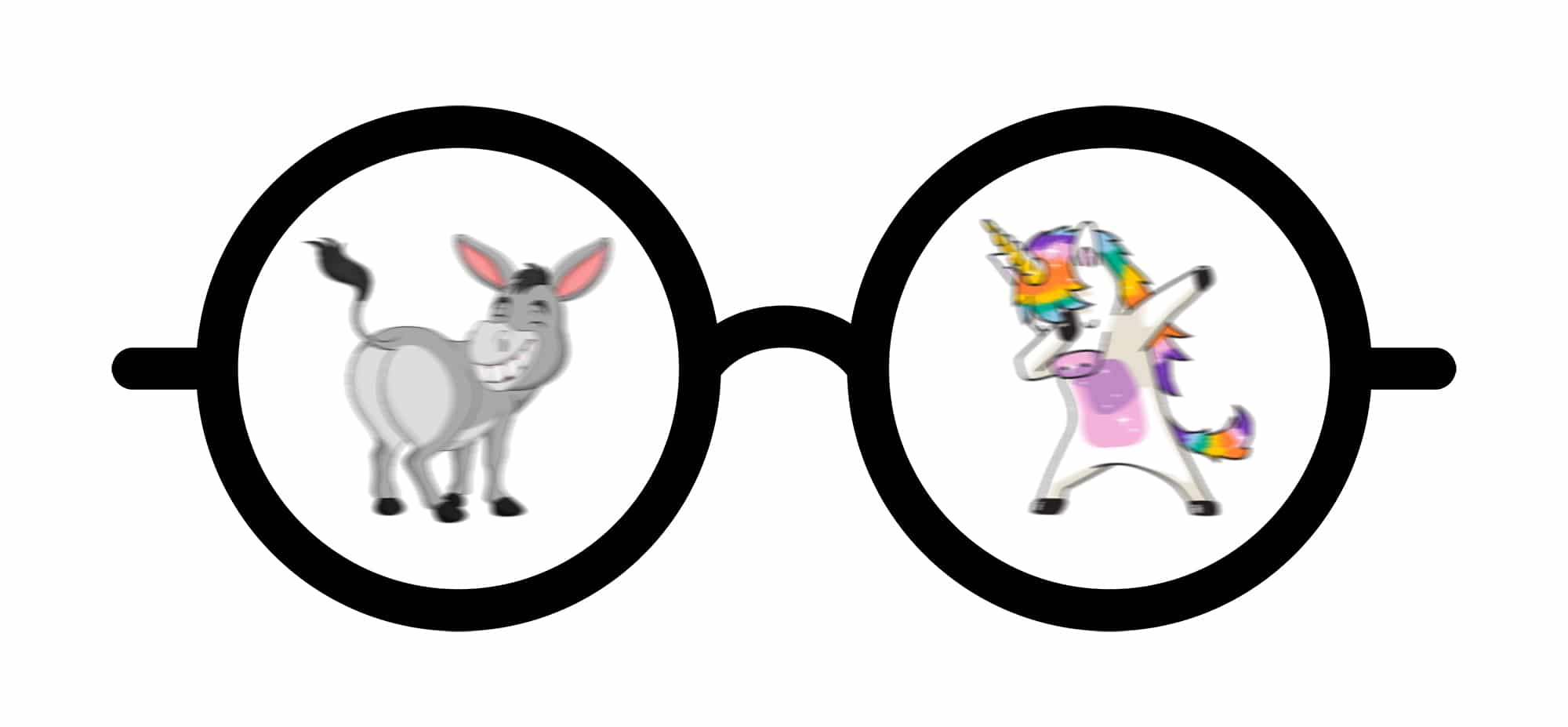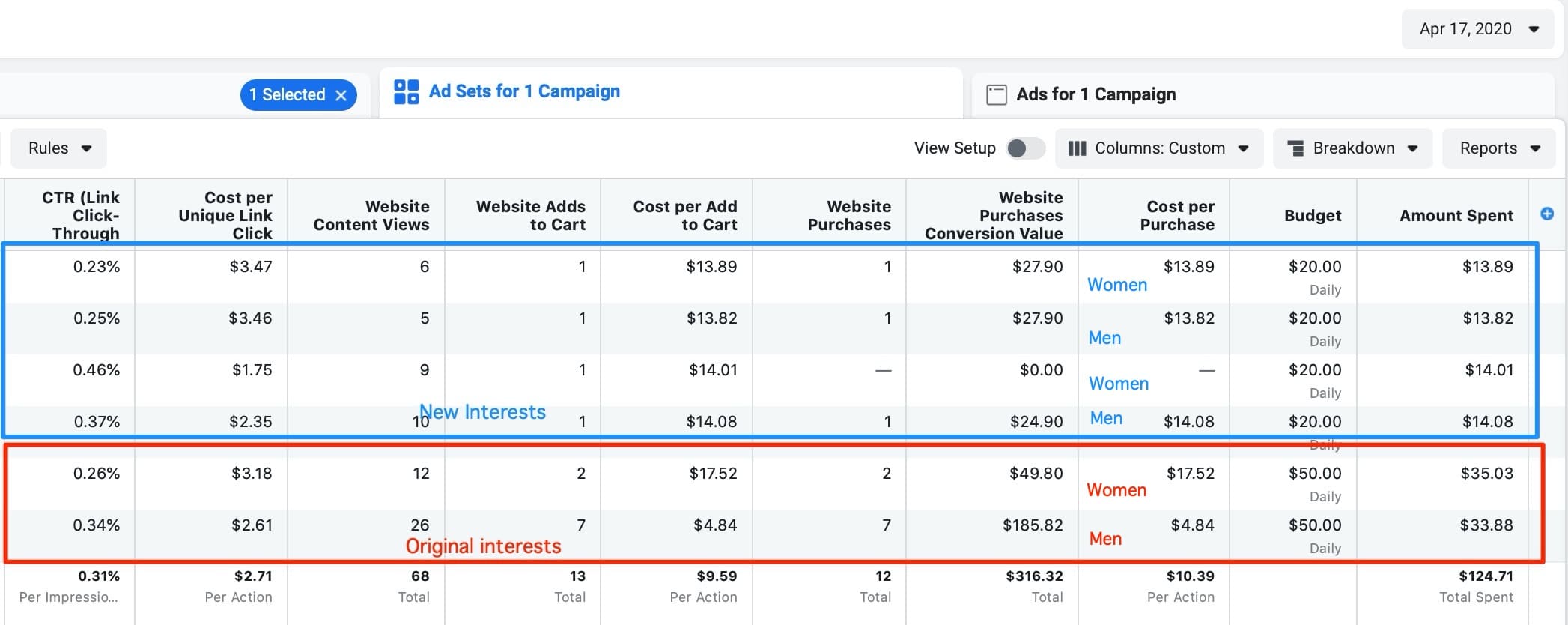
Calm down…it might be just a fluke.
After running your campaign for a day, you’ll see signs that will tell you whether this product is selling well or not.
Don’t get too excited if it makes 2 or 3 sales at $8-10 CPP. Let it run for 2 or 3 more days to make sure it’s the unicorn.
Many of my products sell well on the first day, but become a normal horse by the third or fourth day.
This was one of them.

This coffee mug had been selling well on Etsy. If I’m not mistaken, it sold 3-4 units a day. So I picked it to promote it on the second day of June, just a few weeks before Father’s Day.
The CPP on the first day was really good. I made three sales from the mug at just around $9.23 CPP.
At that time, sales of my main winning Father’s Day mug had slowed. By then it had sold over 9,000 units. I was happy, because I might have found a new winner that would continue making sales at the same pace.
The stats for this mug look good, right? The CPATC was just around $6.92, and CPP was less than $10.
So I did a soft scaling for this mug that duplicated the campaign and increased the daily budget. I found that most buyers were men, so I created a campaign that targeted a male-only audience.
Here are the results for DAY 2:

Hmmmm …. the average CPP for all the campaigns increased to almost $16. I thought it was just a bad day for the product.
Also, Father’s Day was approaching fast. Instead of slowing down the ad spend for this mug, I didn’t want to miss a day for scaling. I decided to add more campaigns with higher budgets immediately.
Here are the results from DAY 3 and DAY 4:


As you can see, the CPP never sank lower than $10, as it did on the first day. I tried to change the target audience and placements, but the CPP still increased every day.
I concluded that this wasn’t my winning mug, so I decided to pause all my campaigns for this mug on Day 4.
The lesson learned: do not rush to scale a campaign, even if the first-day stats look really good.
It might be just a fluke.
Okay, let’s go back to my winning Mother’s Day campaign.
Here are the first-day stats:

CPP: $10.01
CPATC: $7.51
CPC: $2.50
Amount Spent: $30.02
In this case, although the CPP looked good, I still thought the CPC of over $2 was pretty high. I usually use CPC to check the number of visitors who see the ad. I actually prefer a CPC of less than $1.
At that time, I thought the cost per click was high, because I did split-testing of the ads on the first day.
I wanted to compare the performance of the product image on a white background and the one on the lifestyle background.
The product with the lifestyle background produced results with a high CPC.
So, when I did my soft scale, I duplicated the first campaign, removed all ads with the lifestyle background, and kept only the ads that showed the product image on a white background.
I’ll call this campaign “White Background Ad Campaign”.
This White Background Ad Campaign contained two original ad sets and 4 new ad sets with new Facebook Interests.
I set AdSet Budget Optimization (ABO) for this campaign because I wanted to make Facebook allocate a high budget volume to the original ad sets, which had already proved they could make sales at a low cost.
I set the daily budget at $50 for each original ad set and $20 for each new ad sets. The total daily budget for this campaign was $180.

I also duplicated the original campaign in two new campaigns and used Campaign Budget Optimization (CBO), each with a $100 daily budget. The settings inside the campaign were exactly the same.

So the total daily budget for the second day was $410, including the original campaign.
After these campaigns had run for 24 hours, I got results for the second day:

You can see that the original campaign performed less well on the second day.
Although it had a CPP of $10 on the first day, the CPP for this campaign had increased to $30 in the second day.
This is the nature of Facebook Ads. They are never stable, even with winning products. But that’s not a problem. I’ve found this problem can usually be fixed by duplicating the campaign.
You can see the two duplicated campaigns I created the previous day were doing really well.
The Copy #1 campaign made 11 sales from a $101.40 ad spend, while the Copy #2 campaign made 3 sales from a $29.10 ad spend.
The average CPP for these two duplicated campaigns was just around $9.28, which was lower than the CPP of the original campaign on the first day.
I can’t remember why the Copy #2 campaign spent only $29.10 of the total $100 daily budget. Maybe I ran it in the middle of the day, so Facebook couldn’t spend the whole budget.
The White Background Ad Campaign produced 12 sales from a $124.7 ad spend. The CPP was around $10.39.
This was great. Even though the original campaign had an increase in the CPP, the three new campaigns could make 26 sales from a $255.21 ad spend, or $9.81 CPP.
This was a strong stat. This coffee mug could be a winning product. We’ll know for sure when we add more budget to promote it.
Before that, let’s check some insight stats from current campaigns in their second day.
From the stats of the two duplicated campaigns and the White Background Ads Campaign, we can see that the performance of the ad with a white background wasn’t much different.
But when I checked the insight stats for each ad in these two duplicated campaigns, I found that Facebook had allocated most of the budget to the white background ad.
Facebook will actually see the performance of the campaigns and allocate most of the budget to the better-performing ones.
In this case, it allocated the budget to the white background ad, so I just followed Facebook’s lead. All the new campaigns I created after this had only a white background ad.
Now let’s check the stats at the ad-set level. As I told you, I created a new campaign and set the budget at the ad-set level because I wanted to find new interests and expand the audience size.
These are the stats for the ad-set level for that campaign:

The original ad sets still did well. One of them made 7 sales at only $4.84 CPP, while another one made 2 sales at $17.52.
The new ad sets with new interests had a CPP of around $13-14, which was not good compared to the original interests. But they were still generating a profit.
In the screenshot above, I also added the gender to each ad set. You can see the original ad set, which had a male-only audience, performed well. The CPP for this audience ad set was only $4.84.
But we don’t know which gender did better yet, because the CPPs from the new ad sets for both genders were not much different. So, I kept targeting both genders in all new campaigns I created.
This is the summary for all campaigns in Day 2:
The total budget I spent for all campaigns for this mug on Day 2 was around $285.72.
I made 27 sales and earned $119.28 in profit (I already excluded the production and ad costs).
The overall CPP was still around $10.58, which was really good.
So you can see that there are THREE things I usually do when I soft scale my winning products.
- Duplicate the well-performing ad sets in a new campaign and set a higher daily budget, like $50-100 a day.
- Create new campaigns with a new set of Facebook interests to expand the audience pool.
- Adjust the targeting and ads. Always check the stats in deep detail and tweak something inside the campaign to increase the performance of the overall campaign.
With these three actions, you can make more sales from the well-performing ad sets, and find new interests to make more sales from new audiences.
Finding new Facebook Interests is very important, because after you’ve run an ad for a while, the same audience will see the ad more often, and people who’ve already saw the ad once they won’t click the ad. So it’s critical to find new interests to prevent this problem.
Keep doing your soft scaling for more 2-3 days. If you see that all your newly created campaign can still make many sales with a steady CPP, start scaling it aggressively.
You’ll learn how to do this in the next unit.